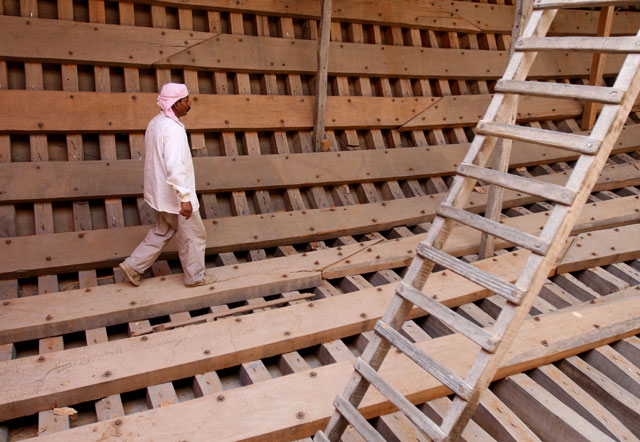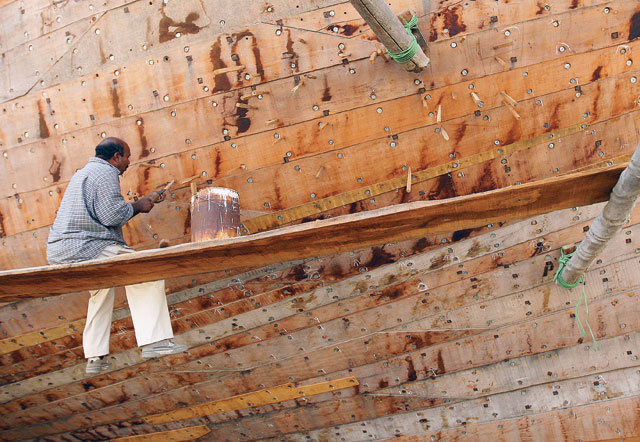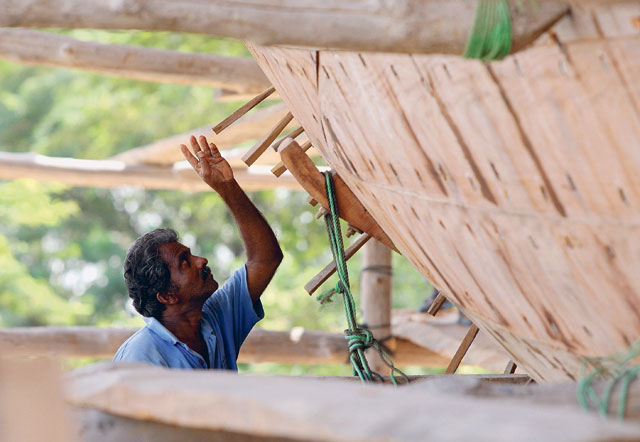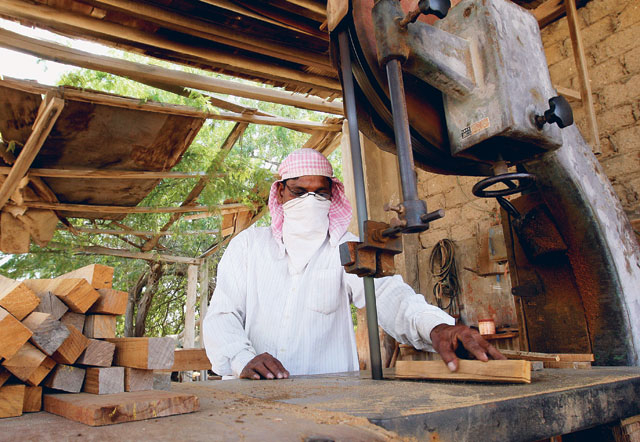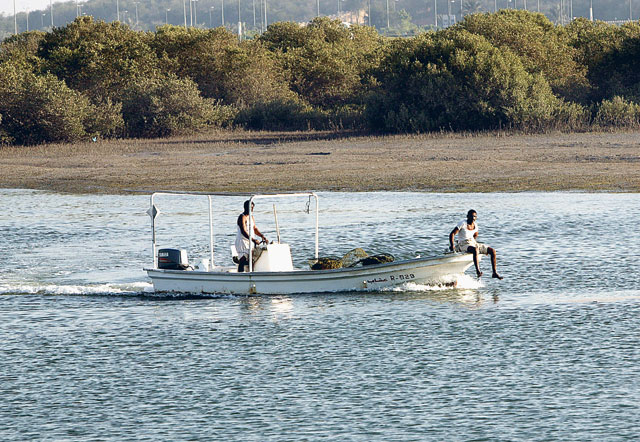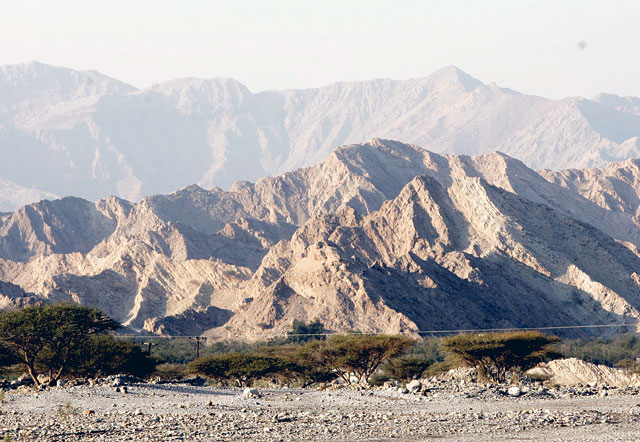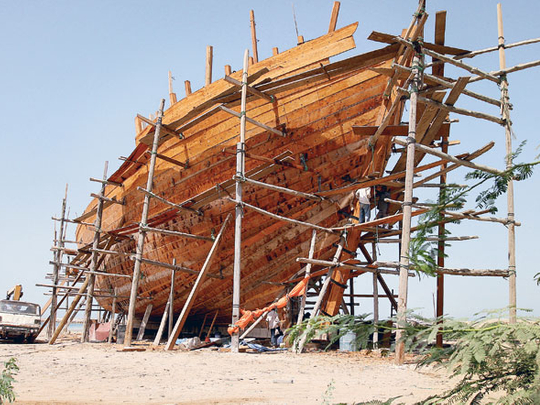
Ras Al Khaimah, one of the smaller emirates in the UAE, is never-the-less alive with vibrant traditions.
The name means the "top of the tent" and it was once the legendary city of Julfar, an ancient international trade centre. The medieval site of the city can be seen on the north side, not too far from the present-day Ras Al Khaimah, a bustling city with real-estate developers, luxury getaways, extreme sports — you name it, you have it.
Archaeological sites are not the only draw for tourists in Ras Al Khaimah. Its immense culture is also represented in the ancient dhow-building tradition, where craftsmen still create dhows with traditional tools.
Dhows are indigenous sailing vessels that have been used to transport goods and passengers to the Arabian Gulf and back.
Made from saj, or teak, each vessel takes anywhere between a month to a year to create, depending on the size and shape.
Al Qalafa, as the process of dhow-building is called, originally involved tying wooden planks with palm fronds. With time, nails, nuts and bolts came into use.
Gulf News photographer Francois Nel found the Al Qalafa intriguing and captured the ins and outs of this ancient dhow-building process.
Did you Know
The word “dhow” is a distortion of the Swahili daw popularised by English writers.
Dhow building is an ancient trade, with centres in the Middle East and Africa. The major centres include the UAE, Bahrain, Kuwait, Oman, Kenya, Tanzania and Zanzibar.
Different styles were developed depending on indigenous goods, though the Middle East imported the saj predominantly from India. These styles turned into different schools of shipbuilding with closely guarded secrets.
Dhows were very different from the triremes of the Mediterranean and Chinese junks, though they were all wooden boats.
The Dhow Yard inf Ajman is said to be the world’s largest boat-building yard and dhow-building centre.
There are mainly four types of dhows. The ghanjah, a large vessel with a curved stem and an ornately carved slope; the baghlah, a deep-sea dhow; the battil, a vessel with long stems topped by large club shaped stem heads; and badan, a small vessel requiring a shallow draught.
Then there are the sambuks, which can go about 20 metres in length, and fishing boats such as the shu’ai and jelbut.
The dhow has two distinct features — the triangular or “lateen” sail and the sewn hull boards (with fibres and cords).



